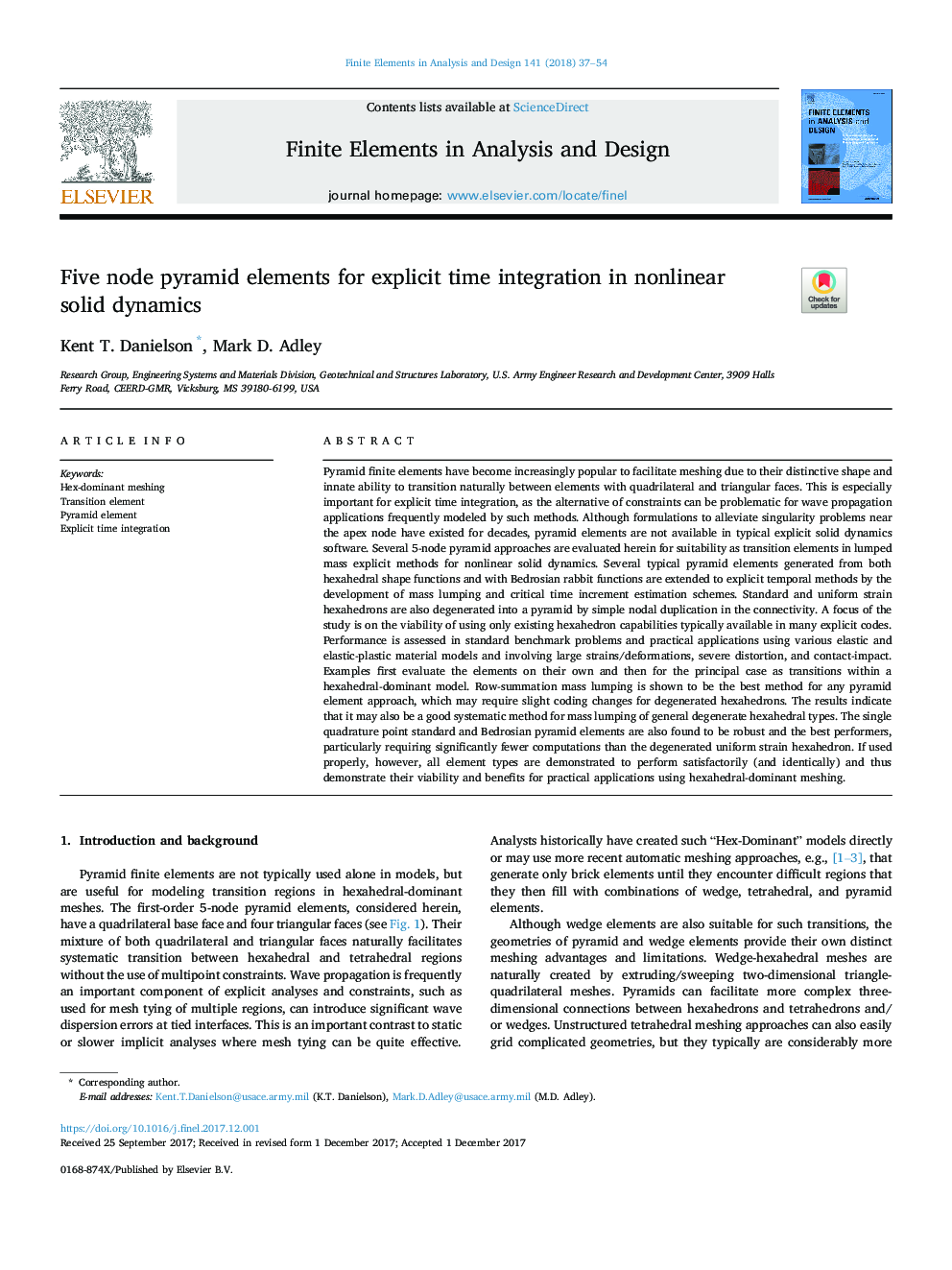| Article ID | Journal | Published Year | Pages | File Type |
|---|---|---|---|---|
| 6925425 | Finite Elements in Analysis and Design | 2018 | 18 Pages |
Abstract
Pyramid finite elements have become increasingly popular to facilitate meshing due to their distinctive shape and innate ability to transition naturally between elements with quadrilateral and triangular faces. This is especially important for explicit time integration, as the alternative of constraints can be problematic for wave propagation applications frequently modeled by such methods. Although formulations to alleviate singularity problems near the apex node have existed for decades, pyramid elements are not available in typical explicit solid dynamics software. Several 5-node pyramid approaches are evaluated herein for suitability as transition elements in lumped mass explicit methods for nonlinear solid dynamics. Several typical pyramid elements generated from both hexahedral shape functions and with Bedrosian rabbit functions are extended to explicit temporal methods by the development of mass lumping and critical time increment estimation schemes. Standard and uniform strain hexahedrons are also degenerated into a pyramid by simple nodal duplication in the connectivity. A focus of the study is on the viability of using only existing hexahedron capabilities typically available in many explicit codes. Performance is assessed in standard benchmark problems and practical applications using various elastic and elastic-plastic material models and involving large strains/deformations, severe distortion, and contact-impact. Examples first evaluate the elements on their own and then for the principal case as transitions within a hexahedral-dominant model. Row-summation mass lumping is shown to be the best method for any pyramid element approach, which may require slight coding changes for degenerated hexahedrons. The results indicate that it may also be a good systematic method for mass lumping of general degenerate hexahedral types. The single quadrature point standard and Bedrosian pyramid elements are also found to be robust and the best performers, particularly requiring significantly fewer computations than the degenerated uniform strain hexahedron. If used properly, however, all element types are demonstrated to perform satisfactorily (and identically) and thus demonstrate their viability and benefits for practical applications using hexahedral-dominant meshing.
Related Topics
Physical Sciences and Engineering
Computer Science
Computer Science Applications
Authors
Kent T. Danielson, Mark D. Adley,
